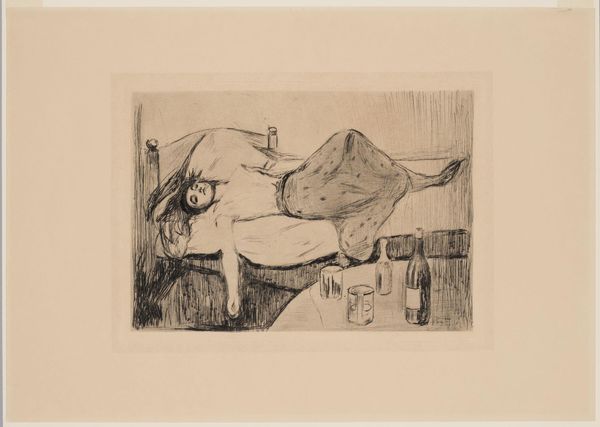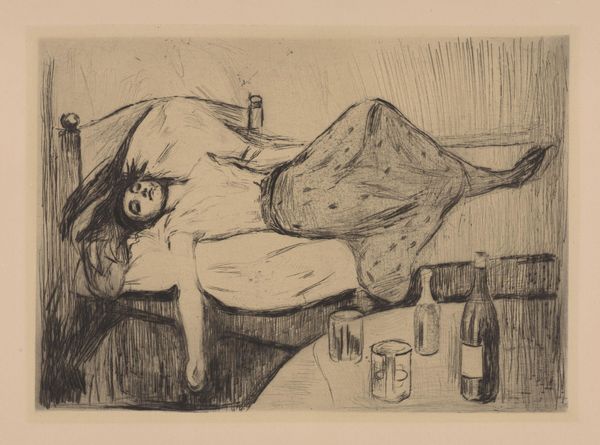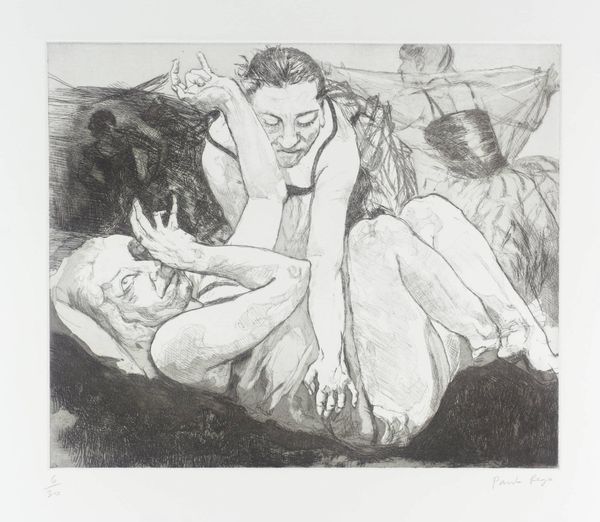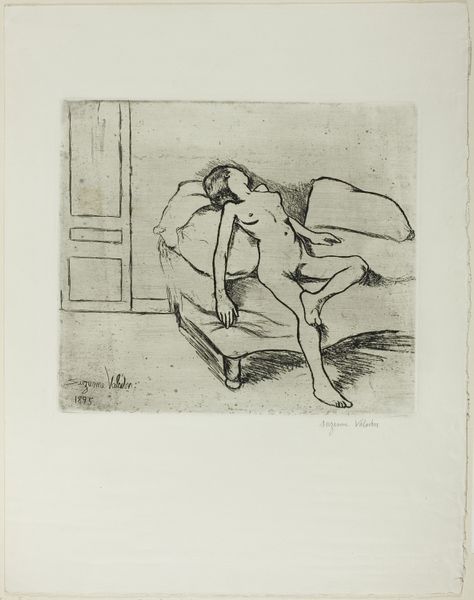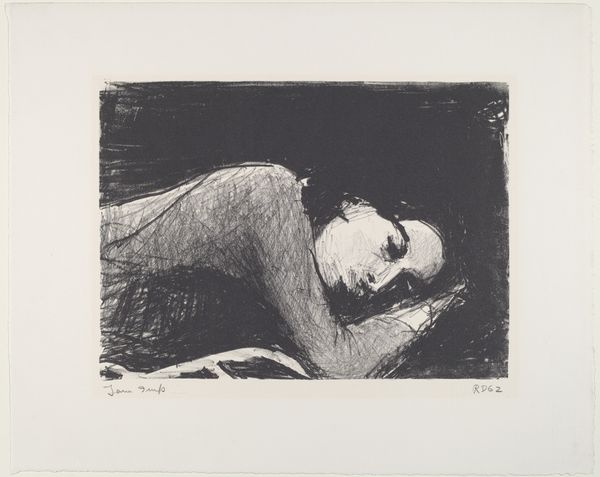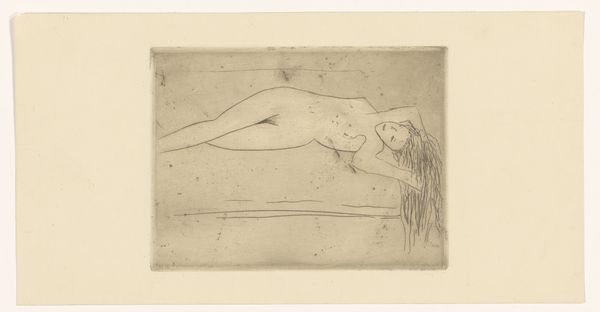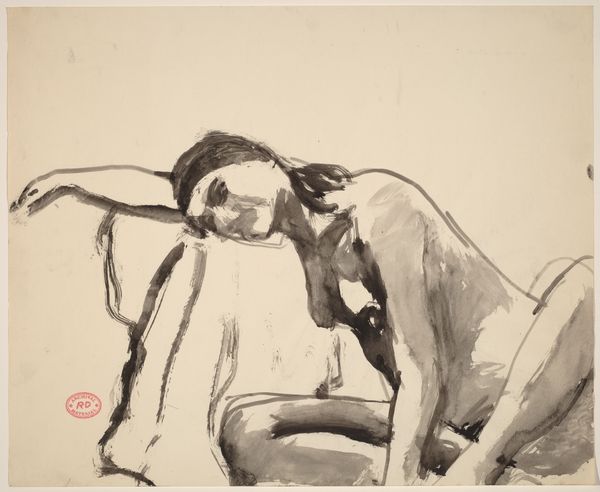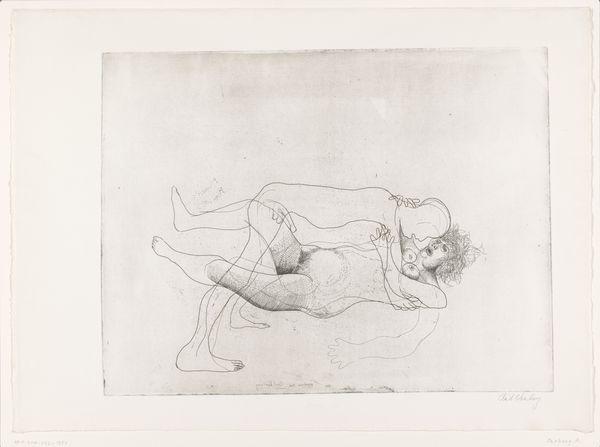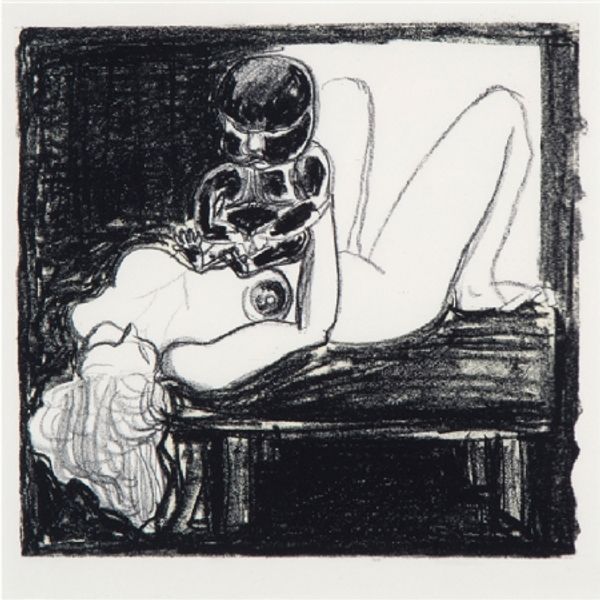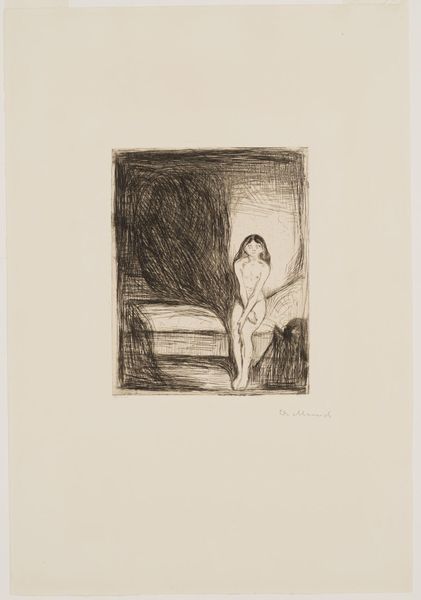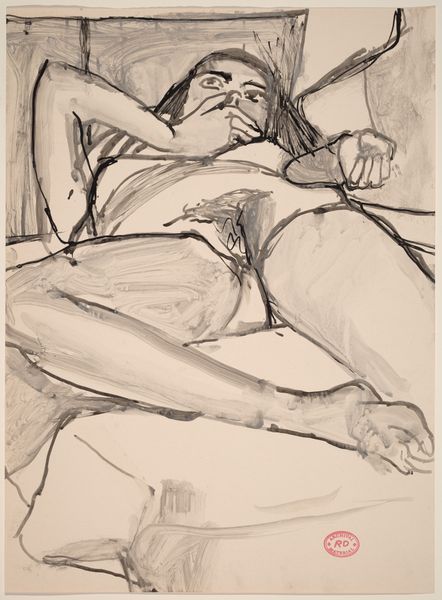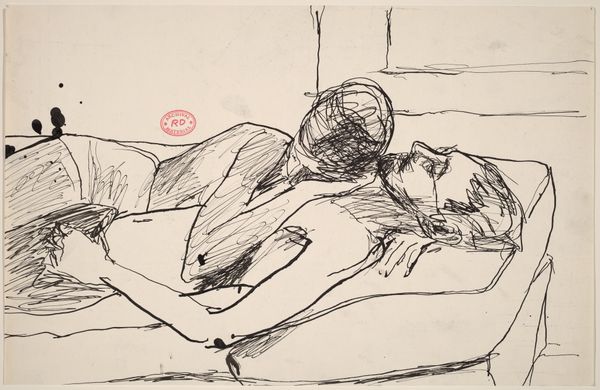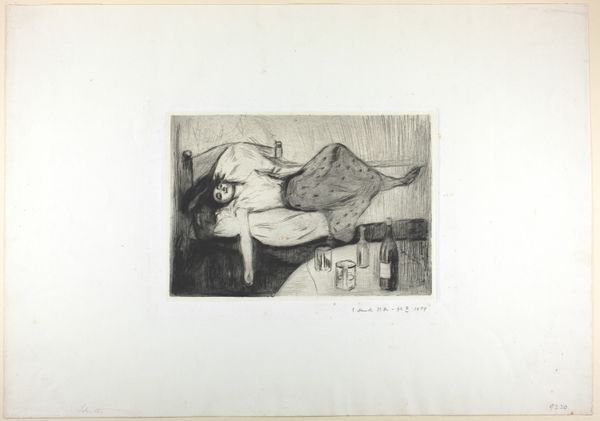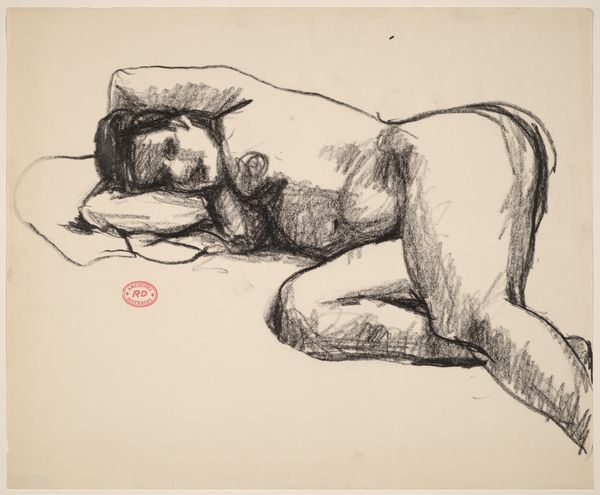
drawing, print, etching, intaglio, paper
#
portrait
#
drawing
# print
#
etching
#
intaglio
#
german-expressionism
#
charcoal drawing
#
paper
#
pencil drawing
#
symbolism
Dimensions: 210 × 294 mm (plate); 344 × 480 mm (sheet)
Copyright: Public Domain
Edvard Munch made this print, "The Day After", using etching techniques, leaving us a glimpse into the undercurrents of society during his time. Here, Munch isn't just depicting a hungover woman; he's offering a commentary on the constraints and expectations placed upon women in late 19th-century Norway. Look at how the tipped perspective makes the viewer complicit, as if we are in the room with her. The empty bottles and glasses strewn about suggest a narrative that deviates from the era's strict social norms, challenging the period's conservative views on female behavior and respectability. Institutions such as marriage and the family are referenced. Understanding this work requires us to consider the complex interplay of personal expression and broader cultural dynamics, using resources such as sociological studies, historical records, and feminist theory. The historian’s role is to explore how it either reinforces or challenges the prevailing ideologies and power structures.
Comments
No comments
Be the first to comment and join the conversation on the ultimate creative platform.
